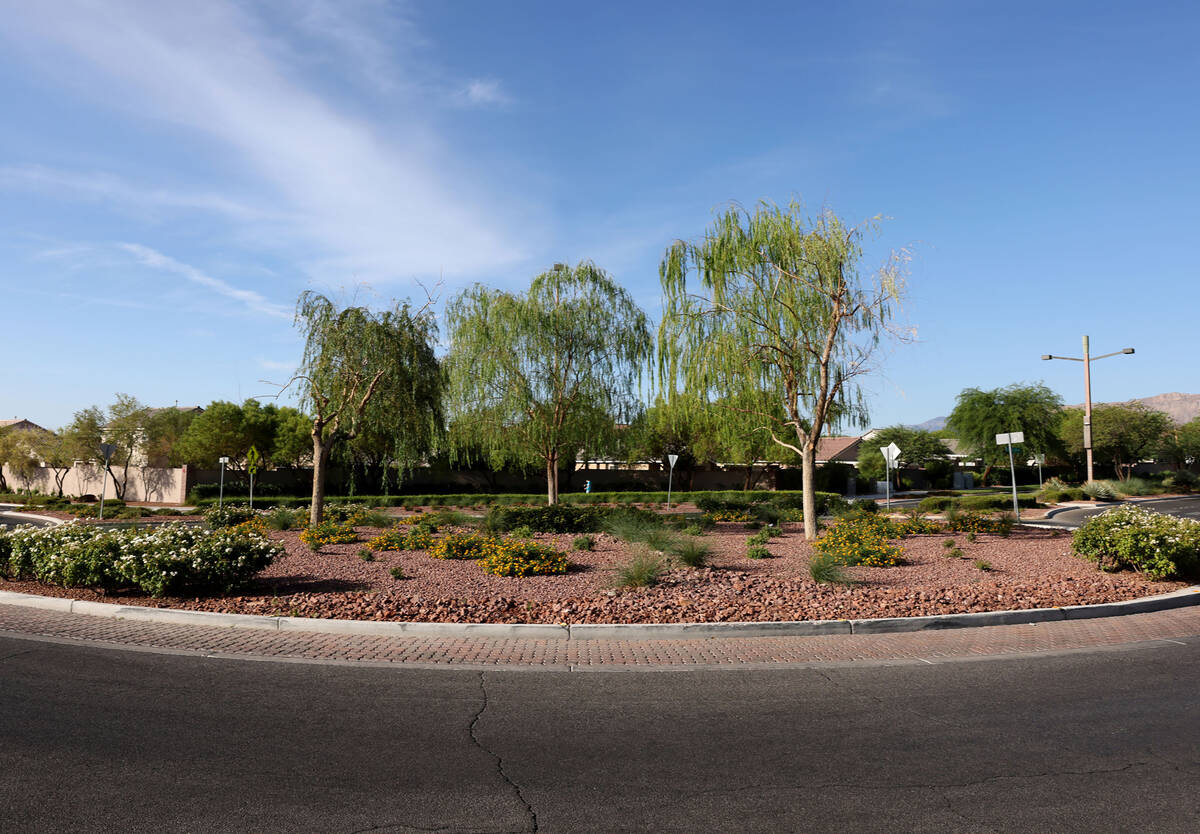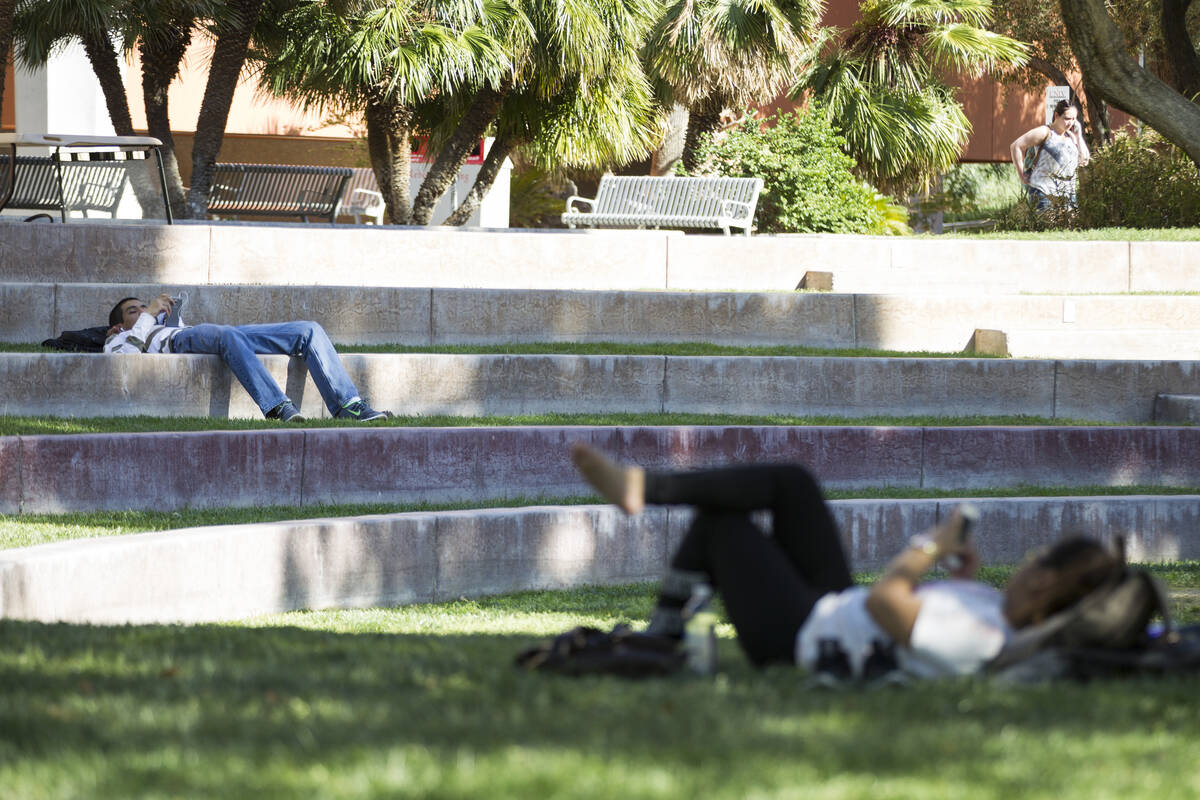DRI study shows plants can help combat rising temps
Southern Nevadans for years have been encouraged to tear out their grass lawns and install drought-friendly desert landscaping as a way of combatting the crippling drought along the Colorado River.
But a new study examines whether that push to conserve water will lead to rising temperatures in desert cities such as Las Vegas, Phoenix and others across the American Southwest.
In a study published this week in the journal Hydrology, researchers from the Desert Research Institute, UNLV and Arizona State University analyzed data from three plots of land located on Arizona State’s campus on the hottest day of 2011, each offering a different landscape type and differing water requirements. That included high-water use trees and grass, called mesic; low-water use native desert landscaping on drip irrigation, called xeric; and a mix of low- and high-water-use plants such as acacia and ghost gum trees and varying shrubs that use sprinklers and drip, called oasis landscaping.
The oasis landscape’s mix of high- and low-water use plants provided the best of both worlds by keeping daytime temperatures cooler and offering denser shade than the desert landscaping while requiring less water than grass and trees, the study said. The desert landscaping used the least amount of water, but it also produced temperatures that were on average 5.4 degrees higher than the other landscape types.
“While these strategies may seem to have immediate benefits, such as reduced per capita water consumption, their long-term benefits are questionable,” the researchers wrote.
Balancing conservation and heat
The landscape study’s lead author Rubab Saher, a research associate at Desert Research Institute, said she hopes that the findings will help homeowners, commercial users and city planners better understand the impact that turf removal has on temperatures in urban areas while balancing the water dilemma that has gripped the Southwest.
“We are in the middle of a crisis, and we need to be mindful,” Saher said. “Hopefully, we can all come up with solutions to improve our conditions.”
Dating to 1999, the Southern Nevada Water Authority has incentivized residents and businesses to tear out grass lawns, with the current program offering $3 for every square foot of turf converted to desert landscaping. Since then, more than 4,700 acres of grass have been replaced throughout the valley.
To up the region’s conservation efforts, Nevada passed a law in 2021 that requires the removal of another roughly 4,000 acres of so-called decorative grass in the Las Vegas Valley by 2027, a move the water authority has said would save about 10 percent of Nevada’s 300,000 acre-foot allotment from the Colorado River.
Dealing with the urban heat island effect is something that the water authority is well aware of, said Colby Pellegrino, the authority’s deputy general manager of resources.
To receive the rebate from the water authority, the converted area must be at least 50 percent covered by plants once they mature, and Pellegrino said they encourage people to plant trees in converted plots to offset the warming trend that comes with removing grass.
“Despite the fact that we have these programs to go out and remove turf, we have a lot of systems in place to ensure that what they are putting in are going to be resilient to the rising temperature,” Pellegrino said.
Concrete jungle
The bigger factor in those warming trends, Pellegrino said, is the urban design of cities such as Las Vegas, where heat gets trapped in concrete and asphalt during the day and is slowly released into the air at night.
Average annual temperatures in Las Vegas have increased by 5.9 degrees since 1970, according to the latest research from Climate Central, ranking as the second-fastest warming city behind only Reno. And nights have warmed even more, with average summer nights in Las Vegas now 9.5 degrees warmer than they were in 1970, according to Climate Central.
“Landscaping cannot overcome the impacts of the built-up world in the cities,” Pellegrino said. “But the appropriate use of shade is our best tool. And I don’t think it makes sense to sacrifice water use, particularly in the Mohave desert, when there’s other suitable alternatives to get us to the same end.”
Contact Colton Lochhead at clochhead@reviewjournal.com. Follow @ColtonLochhead on Twitter.





















